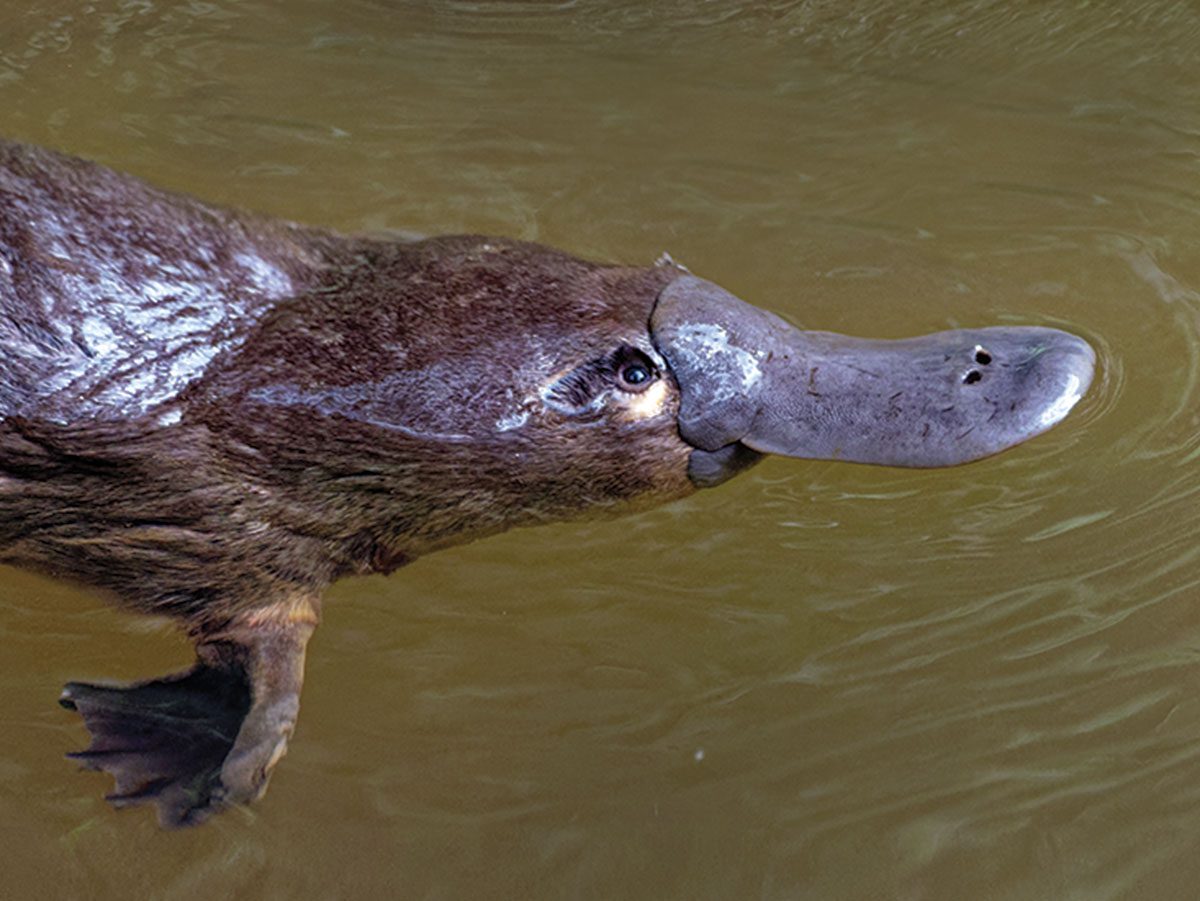The platypus is a fascinating and unique animal native to Australia and Tasmania, with a duck-like bill, webbed feet, and a beaver-style tail. Among the many fascinating facts about the platypus is that it is one of the few venomous mammals, with spurs on its hind legs producing venom that can cause paralysis, extreme pain, and swelling. The platypus is also semi-aquatic, lacking true teeth and stomach but with keratinized pads on its bill for grinding and chewing food. It is an excellent swimmer and has electroreception, allowing it to detect its prey in the water. Unfortunately, despite conservation efforts, platypuses are currently listed as “near-threatened” due to pollution, hunting, and habitat loss.
10 Fascinating Facts About Platypuses
1. Appearance
The platypus is a mammal native to Australia and Tasmania. It has a unique appearance with a duck-like bill, webbed feet, and a beaver-style tail. They are usually about 20 inches long and can weigh up to 5 pounds.
2. Venomous
One of the surprising facts is that platypuses are one of the few venomous mammals. The males have spurs on their hind legs that produce venom potent enough to cause swelling, excruciating pain, and paralysis.
3. Semi-aquatic
Platypuses are semi-aquatic animals and spend most of their time in water. They have the ability to close their eyes, ears, and nostrils while diving, relying on electroreception to locate prey underwater.
4. Egg-laying
Another curious fact about platypuses is that they are one of the only mammals that lay eggs. The females lay one to three eggs in a burrow and then nurse their young with milk.
5. No teeth
Platypuses do not have teeth. Instead, they have keratinized pads on their bills that they use to grind and chew their food.
6. No stomach
Another unique aspect of platypuses’ digestive systems is that they lack a true stomach. Instead, they have an esophagus that connects directly to their intestines.
7. Superb swimmers
Platypuses are exceptional swimmers, and their webbed feet are excellent for paddling through the water. They can stay underwater for up to two minutes and swim at speeds of up to 6 miles per hour.
8. Electroreception
Platypuses also have a unique sense called electroreception, which helps them detect prey in the water. They sense electrical impulses generated by the muscles of prey, allowing them to locate food effectively.
9. Highly endangered
Platypuses are currently listed as “near-threatened” by the International Union for Conservation of Nature (IUCN). The population has decreased due to habitat loss, pollution, hunting, and trapping.
10. Conservation efforts
Several conservation efforts are underway to protect and restore platypus populations. These include implementing measures to reduce water pollution, restoring wetland habitats, and ensuring that trapping and hunting of platypuses are prohibited. By taking these steps, we can help ensure the survival of this unique and fascinating animal.
